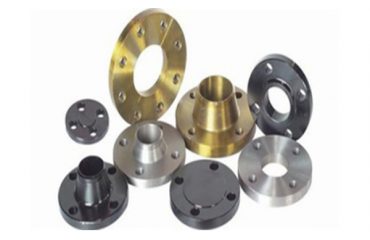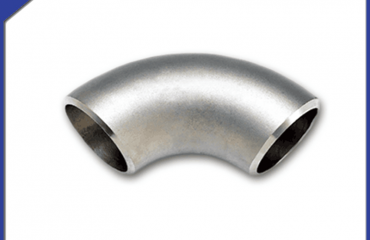
Title: Advantages of Threaded Fittings in Engineering and Industrial Applications
Abstract
Threaded fittings are mechanical connectors widely used in piping, plumbing, and structural systems. This paper explores their key advantages, including ease of installation, cost-effectiveness, versatility, and reliability. By examining their design, performance, and real-world applications, this analysis highlights why threaded fittings remain a preferred choice across industries.
1. Introduction
Threaded fittings are components with helical ridges (threads) that enable secure, leak-tight connections between pipes, valves, and equipment. Unlike welding or flanged joints, threaded fittings rely on mechanical interlocking, making them adaptable to diverse environments. This paper evaluates their advantages, including installation efficiency, reusability, and compatibility, to demonstrate their enduring relevance in modern engineering.
2. Fundamental Design and Mechanics
2.1 Thread Types
Threaded fittings use standardized thread profiles such as National Pipe Thread (NPT), British Standard Pipe (BSP), or Metric threads. These designs ensure precise mating between male and female threads, creating a seal through friction and compression.
2.2 Sealing Mechanisms
Threads alone may not guarantee a leak-free joint. Additional seals like Teflon tape, anaerobic adhesives, or metal gaskets enhance sealing performance by filling micro-gaps and resisting pressure.
3. Key Advantages of Threaded Fittings
3.1 Ease of Installation and Disassembly
Speed: Threaded fittings can be installed manually or with simple tools (e.g., wrenches), reducing labor time compared to welding or brazing.
Adjustability: Misaligned pipes can be repositioned during assembly, avoiding costly rework.
Reusability: Fittings can be disassembled and reused without damaging the components, ideal for maintenance or system modifications.
3.2 Cost-Effectiveness
Lower Material Costs: Threaded fittings are often cheaper than alternatives like flanges or couplings.
Reduced Labor Expenses: Simplified installation requires less skilled labor and minimal equipment.
Long-Term Savings: Durable designs minimize replacement costs in low-corrosion environments.
3.3 Versatility in Applications
Pressure and Temperature Tolerance: Threaded fittings withstand high pressures (up to 10,000 psi) and extreme temperatures (-200°C to 600°C), depending on material (e.g., stainless steel or brass).
Fluid Compatibility: Suitable for gases, liquids, and corrosive substances when paired with compatible materials (e.g., PVC for chemicals).
3.4 Space Efficiency
Compact Design: Threaded joints occupy less space than flanged or welded connections, critical in confined areas like automotive engines or aircraft.
Modular Systems: Fittings allow for easy expansion or reconfiguration of pipelines.
3.5 Safety and Reliability
Vibration Resistance: Threaded joints secure connections in dynamic environments, reducing loosening risks.
Leak Prevention: Properly sealed threads minimize fugitive emissions, meeting environmental and safety standards.
4. Applications Across Industries
4.1 Plumbing and HVAC
Domestic Water Systems: Threaded fittings (e.g., galvanized steel or PEX) simplify faucet and pipe installations.
HVAC Systems: Copper or brass fittings ensure efficient refrigerant and condensate transfers.
4.2 Oil and Gas
Wellheads and Valves: High-strength threaded connections (e.g., API 5CT) withstand 井下压力.
Refineries: Stainless steel fittings resist corrosive chemicals.
4.3 Automotive and Aerospace
Hydraulic Systems: Threaded fittings (e.g., JIC or ORFS) maintain pressure in braking and fuel lines.
Aircraft Engines: Titanium or alloy fittings endure extreme temperatures and vibrations.
4.4 Construction and Manufacturing
Structural Supports: Threaded rods and couplings secure steel frameworks.
Machinery: Quick-release fittings facilitate equipment maintenance.
5. Limitations and Mitigation Strategies
While threaded fittings offer numerous benefits, they have limitations:
Thread Wear: Over-tightening can strip threads; torque wrenches ensure proper tension.
Corrosion Risk: Carbon steel fittings require coatings (e.g., galvanization) in corrosive environments.
Size Constraints: Large-diameter pipes (> 4 inches) may require flanges for structural integrity.
6. Future Trends
Smart Fittings: Integration with sensors to monitor pressure or leaks in real time.
Advanced Materials: Development of corrosion-resistant alloys (e.g., duplex stainless steel) for extreme conditions.
Automated Installation: Robotic tools for precise threading in hard-to-reach areas.
7. Conclusion
Threaded fittings remain indispensable in engineering due to their ease of use, cost efficiency, and adaptability. While they face competition from welded and flanged joints, their ability to balance performance and practicality ensures their continued dominance in sectors ranging from plumbing to aerospace. As technology evolves, threaded fittings will likely incorporate innovations that further enhance their reliability and sustainability.
 Language
Language Espanol
Espanol English
English Italian
Italian عربى
عربى
 Skype: chinamaker99
Skype: chinamaker99  Tel: 86-316-5120812
Tel: 86-316-5120812  Email:
Email:  Whatsapp:
Whatsapp: 
